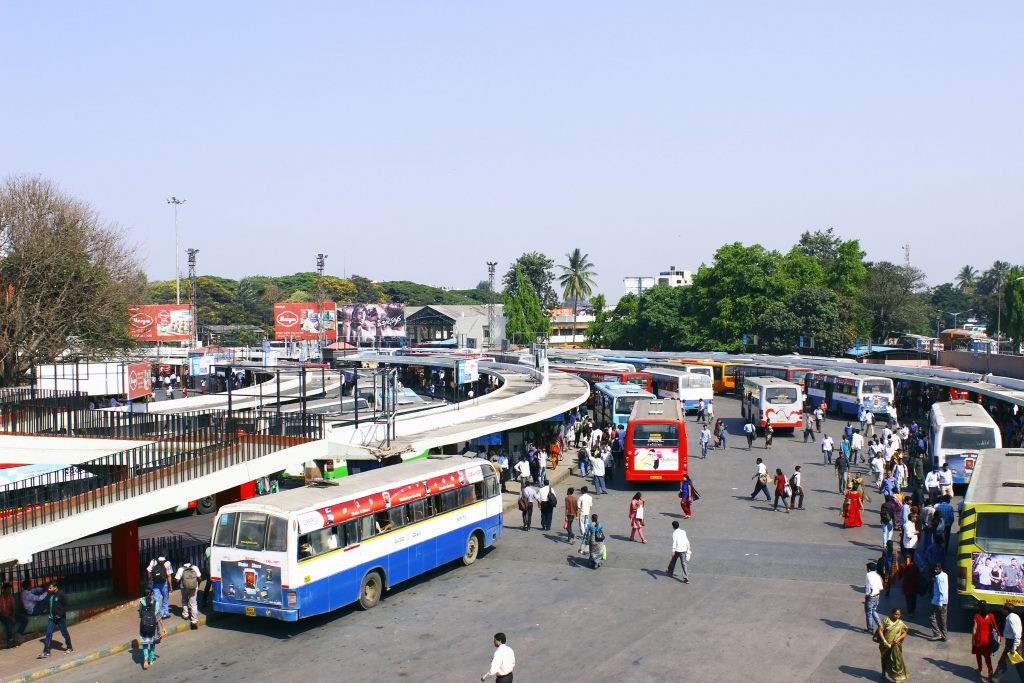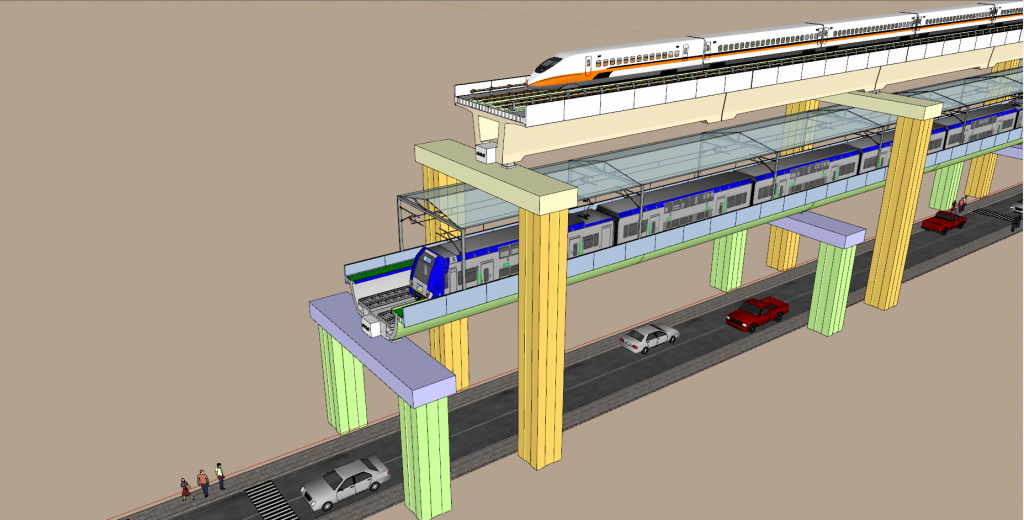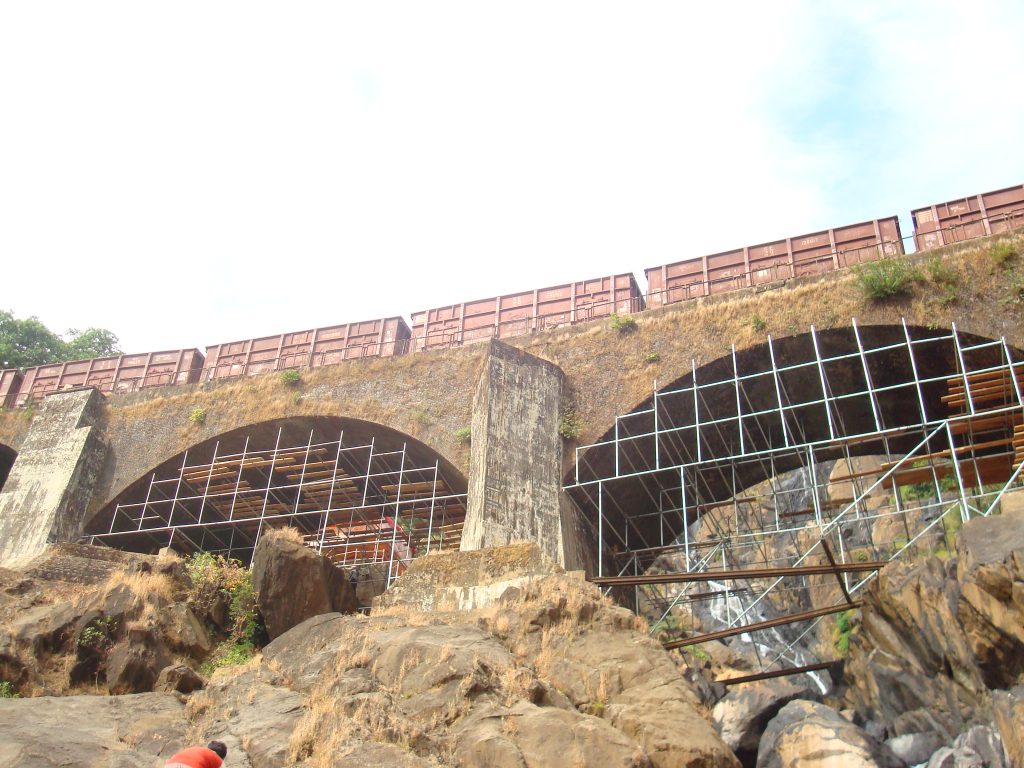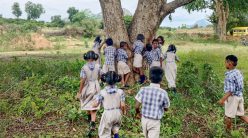What IISc scientists are doing to help solve the city’s civic challenges

In the 2014 Malayalam film Bangalore Days, the character played by actor Nivin Pauly is asked during a job interview about his opinion of being posted in Bangalore city. With a shy smile, he thinks, “Who can say no to Bangalore?”
That one statement conveys the attraction the “garden city” holds in the hearts of those seeking a better life. Many parts of the country have their unique allure, but not many can deny that Bangalore remains a popular destination. Scores move to the city in search of better education and job opportunities. Bangalore is an IT hub, a fertile ground for ideas and startups.
But Bangalore is also a city struggling to come to grips with this mass migration. This influx has led to the city ballooning unscientifically, its urban sprawl gobbling up newer lands as the city heaves under the demands of an exploding population. Traffic, infrastructure, waste management, urban flooding, and demand for water and electricity are all increasing, bringing greater and newer challenges every year.
In the heart of this burgeoning city, IISc occupies a sprawling canopy-covered piece of real estate. But what is the Institute, known for its century-old legacy of nation building, doing to help alleviate the maladies of Bangalore? How are its scientists helping the city tackle its infrastructural and socio-economic problems?
“People sometimes question what is IISc’s contribution to society,” says Anjula Gurtoo, Chair of the Centre for Society and Policy (CSP), IISc. There are scientists at the Institute who do fundamental research, she adds, but many of them also work on application-oriented research – some even addressing the city’s problems.
Anjula’s own group, for example, works with the state government to make policy decisions that can make the city safer for women. “A lot of times, women face harassment in buses. We have given a policy document, a recommendation as to what steps are to be taken so that women can travel without any apprehension,” she says. The Directorate of Urban Land Transport (DULT) took their recommendations seriously and is implementing some of these policy decisions, Anjula adds.
It is not just policy recommendations that IISc scientists are helping with. Many of them have actively stepped out into the city to produce solutions for civic issues such as urban flooding, power supply interruptions, infrastructure collapse, and traffic congestion, working closely with government organisations.
Out on the streets
If there is one thing Bangalore’s visitors complain about, it is the city’s never-ending traffic woes. Fortunately, several scientists at IISc have been trying to develop solutions for such mobility challenges. IISc’s Centre for infrastructure, Sustainable Transportation and Urban Planning (CiSTUP), for example, has faculty members and students working on traffic congestion, public transport, and urban planning, as do researchers in the IISc Sustainable Transportation Lab of the Department of Civil Engineering (CiE) run by Ashish Verma.
“We are working on several projects with the authorities, including Metro master planning, feeder routes, and schedules for last-mile connectivity,” says Ashish. His lab’s partnership with the Bangalore Metropolitan Transport Corporation (BMTC), Ashish explains, has helped the agency rationalise bus routes and services, improve the reliability of public transport operation, and address safety issues in public transport. “In the last 14 years, we have worked on all aspects related to this area.”
Ashish and his team have long preached the virtues of focusing on last-mile connectivity and improving public transport infrastructure to help ease the city’s traffic woes. Their research shows that the city needs 80% of its daily commute to be via public transport. But expecting people to change their behaviour – switch from private vehicles – without improving footpaths and roads or offering better last-mile connectivity, is pointless, he explains. “Metro cannot come to your door.”
To highlight how public interventions can change people’s attitudes, Ashish’s lab embarked on an interesting experiment in November 2020, partnering with UK and Indian government agencies. They picked one of Bangalore’s iconic streets – Church Street – and decided to restrict it to pedestrians on the weekends.
Research shows that the city needs 80% of its daily commute to be via public transport

One of the most famous streets in the city, it attracts huge footfalls, is easily accessible via public transport and has become more pedestrian-friendly with recent renovations such as expanded sidewalks. The findings from the project were significant. During the test period, footfall in the metro station increased by more than 100%. Restaurants and gift shops also saw an increase in footfall. Street vendors enjoyed unprecedented sales. There was a 25% improvement in air quality, a reduction in noise pollution, and an 11-15% increase in a shift to public transport, walking, and cycling, according to Hemanthini Allirani, a PhD student who worked on the project.
Two years after the test, the social activities that picked up pace during the test period – live music, street shows, and artists selling paintings, jewellery, crafts, and other trinkets – continue to this day.
“Pedestrians are reclaiming the street by themselves. It has induced a positive behaviour change. These kinds of spaces become vibrant social places and help social wellbeing,” Ashish remarks. Such has been the success of the project that the authorities are mulling over the idea of expanding this project to other parts of the city. “DULT has identified eight such streets to implement this project,” adds Hemanthini.
Ashish feels that just doing such research is not enough. He believes that scientists should also be active participants in social discourse, attending town halls and citizen discussions. He himself has attended and spoken at several such spaces; most recently he lent his voice against a proposed flyover on Sankey Road, which he believes – a view backed by research – will not help solve the problem of traffic congestion in the area.
“Mobility is an area where we do research and come up with solutions, [but] we do not have the power and privilege to implement it,” explains Ashish. “You can empower common people. A research lab like ours can go and educate [people] so that they are empowered to ask the right questions to their elected representatives. It is a way to translate your research for the betterment of society.”

Water, water everywhere
Two other areas that have been feeling the pinch of the city’s growth are water consumption and sewage treatment. A few years ago, the state government decided to carry out a large project to tackle these twin issues. The booming population meant that the city’s water consumption, and by extension the amount of sewage water generated, had increased. At the same time, neighbouring districts like Anekal, Chikkaballapur, and Kolar were facing a water shortage with reduced rainfall and falling groundwater levels. To tackle this, the Government of Karnataka decided to treat the sewage generated in the city of Bangalore and transmit the treated water to existing lakes and tanks in neighbouring districts. The key issue was to ensure that the sewage water was treated properly before sending it to the water bodies in the neighbouring districts of the city.
But the project faced legal hurdles due to complaints that the treated sewage water had heavy metals and hence there were delays in the execution of the project, according to KS Nanjunda Rao, Chief Research Scientist in the Department of Civil Engineering. IISc was approached to check the quality of treated water before it reached different lakes.
Faculty members from the Centre for Sustainable Technologies (CST), HN Chanakya and Lakshminarayana Rao, were at the forefront of this investigation. They checked the processes put in place for treatment and transmission and made suggestions; their findings convinced the Supreme Court to vacate the stay order it had placed.
“Currently the project is in its fourth phase. A huge number of tanks in Chikkaballapur, Chintamani, Kolar and so on, are now filled with the treated water. The water quality – according to the report submitted by the CST faculty – is good, and they can use it for irrigation,” Nanjunda Rao says.
He adds that IISc researchers have been working with the Bangalore Water Supply and Sewerage Board (BWSSB) for over a quarter of a century, on projects like redesigning infrastructure to speed up the pumping of Cauvery water to the city. Removing excess water is equally challenging. Urban flooding has quickly found its place in the popular lexicon thanks to factors like rapid and unplanned urbanisation and encroachment of natural water bodies.
To address this problem, IISc scientists have developed high-resolution 3D terrain maps to understand how water flows during urban floods. The project, fronted by the Interdisciplinary Centre for Water Research, with collaborators including the BBMP and Karnataka State Natural Disaster Monitoring Centre (KSNDMC), focused on a holistic approach – from estimating the water level in different localities to improved forecasting, better land-use management, and urban planning. The team also suggested measures like adding more lawns and gardens, using porous concrete to allow groundwater recharging, and large-scale rainwater harvesting.
Nanjunda Rao points out why it is important for scientists to work on such solutions, even if they are not challenging research problems. One reason, he says, is that engineers in government departments may not be up to date with current technologies and advances, and may be bogged down with routine work, like site visits and preparing tenders. “We have updated knowledge, being academics. Adopting new techniques and involvement of faculty from the institution will help build safe and economical infrastructure,” he says.
“We have updated knowledge … Involvement of faculty will help build safe and economical infrastructure”
Lighting the bulb
A few years ago, when an ambitious Smart City project was launched on a sprawling 4,000-acre patch of land in Kempe Gowda Layout, a key challenge was planning the electricity supply and layout for the entire infrastructure. Which is why the authorities decided to rope in scientists from IISc’s High Voltage (HV) Lab in the Department of Electrical Engineering (EE), and the Department of Electronic Systems Engineering (DESE), as consultants.
“We looked into the design of cabling sizing, HT and LT electrical installations, sewage treatment and pumping stations, 11 kV RMU, feeder pillars, smart street lighting, earthing and lightning protection schemes, and so on. We looked at the finer design aspects of each and everything,” recalls B Subba Reddy, Chief Research Scientist at the HV lab.
Another project that Reddy and L Umanand, Professor in DESE, worked on was technical validation of an overhead 25 kV electric traction interference with a 750 V DC metro traction system. This complication arose over a 600 m stretch where a metro line, a traction railway line and a road overlapped. Rail Infrastructure Development Company (Karnataka) Limited (K-RIDE), which was coordinating with the Bangalore metro and state government, was worried about the different electrical lines crossing each other. Reddy’s team suggested a novel design for minimum static clearances and special shielding arrangements to ensure safety. They also came up with recommendations for mitigating electromagnetic interference (EMI) and earthing, with three layers: the first for vehicles, the second for rail traction and the topmost layer for the metro.

“[But] there were concerns that there could be EMI and electromagnetic compatibility issues. So, we did a lot of simulation studies and gave a design with shielding. The project just got government clearance.”
This is not the first time that researchers from these departments have worked with government agencies. Reddy adds that some of them have played a key role in the setting up of the Central Power Research Institute (CPRI) and have worked on several consultancy and research projects for the defence and space sectors, and other industries. They have also designed, evaluated, and tested components for 400 kV and 800 kV power transmission systems, and the first transmission lines set up by Powergrid Corporation of India Limited, according to Reddy.
“Whenever industries, utilities or any other agencies approach, we help”
Reddy himself has been working with Namma Metro and BESCOM (Bangalore Electricity Supply Company Limited) on several issues related to underground cables, overhead transmission, and substations for years. “Whenever industries, utilities or any other agencies approach, we help,” he adds.
BESCOM even took the help of EE researchers to help tackle the overwhelming volume of calls during power outages, especially in the summer. Researchers from the Institute, led by Gurunath Gurrala, Associate Professor and AG Ramakrishnan, Professor in EE, worked with a couple of startups and proposed a project to develop an AI-powered human-like voice bot that would field routine calls, with only the more complicated issues being passed on to human operators. The team sifted through the calls, classified them into categories, and crafted automated replies for the voice bot. What they found to be the biggest challenge was the language itself.
“We realised that Bangalore is a city with linguistic diversity, mixed accents, and mixed languages in a single sentence,” says Gurunath. “One of the main problems a voice bot faces is differentiating between accents. We worked on a proposal for building a tech that worked on mixed languages, especially recognising speech with mixed sentences.” However, the proposal didn’t take off at the last minute due to the state government change at that time, he adds.
Infrastructural Challenges
In 2018, the Bengaluru Metro Rail Corporation Limited (BMRCL) had a quandary on its hands. Its engineers had noticed that a railing was cut near Trinity Station. Further investigation found structural issues with pillar 155 – a 2 m deep crossbeam in which the concrete had not been compacted properly. Unsure of how to proceed, the authorities contacted JM Chandra Kishen, Professor in CiE.
“One of the bearings got crushed because it was tilted. They could not replace the bearing,” he recalls. It was a defect that should have been rectified in the construction stage itself. Finding a solution now, with the metro line in full operation, was not going to be easy. “We told them that the whole structure must be lifted and the bearings replaced. But if you lift the whole structure, and you are not careful, it will crack at many places,” Chandra explains.
Chandra’s team set to work. On a Sunday evening, metro operations were stopped. The team deployed almost 30 electrical resistance strain gauges to monitor the lifting and replacement.
“We had a large monitor, and the procedure was done carefully, step by step, so that the concrete doesn’t exceed a certain limit of tensile strength. We lifted the viaduct, including the crossbeam that had developed gaps in concrete, before reinforcing the damaged part’s structure. We had specially made bearings to fix the issue.”
The team then monitored the structure for the next month to ensure that there were no complications. “When there is some damage or problem with infrastructure, they consult us: BBMP, BDA, NHAI, Indian Railways, Indian Army … our work is on out-of-the-box solutions and health monitoring of infrastructure,” says Chandra.
Chandra’s lab has been working on such solutions since 2007, when they were first approached by the Indian Railways to check the strength of the Dudhsagar bridge near Goa, as they were worried about the load-bearing capacity of the bridge, constructed during British rule. “The Indian Railways wanted to upgrade their infrastructure. They were transporting iron ore from Goa to other places.” The Railways wanted the bridge to have a carrying capacity of at least 25 tonnes per axle. Chandra’s team did extensive testing with sensors and found that the bridge could easily carry up to 35 tonnes. “This was the first project where we did an actual field test,” he reveals.
Since then, his lab has been in regular contact with various government agencies on projects ranging from checking the structural integrity of infrastructure to postmortem analysis of structural failures. When the metro pillar collapsed earlier this year on Outer Ring Road in Bangalore, tragically killing two people, it was his lab that was roped in to analyse the damage and cause.

Another recent example is a 4.2 km long bridge in Goraguntepalya near Peenya, which has remained shut for heavy vehicles for well over a year, as it started showing signs of distress. “Fifty-eight cables inside the structure have snapped with corrosion. Demolishing an old bridge and building a new one will cost around Rs 4,000 crore. We did extensive study and load tests on the bridge. We looked at how this can be retrofitted. We also suggested adding additional cables to the existing structure to enhance the flyover’s carrying capacity.” Based on his suggestions, the authorities have started adding about 240 cables, two cables per span (the distance between two pillars), Chandra says. The modifications have helped keep the cost down to just Rs 30 crore, apart from preventing the damage, dust pollution and noise that would have been caused by building a new bridge.
Chandra adds that working with diverse government agencies has helped them apply learnings from one experience to another. He was once involved in an aqueduct project to bring water from the Western Ghats to the city, which allowed him to work with large prestressed concrete structures. “Everything was done on the ground, lifted, and placed in its position.” Later, when he was asked to consult on the ongoing metro construction near the airport, he realised that similar precast structures could be used to build the viaducts.
“The structures for moving water are so huge that two trucks can go inside. So, with the metro structure being lighter, we suggested that they go for precast technology. Now the airport line is all precast.” He adds that this approach can cut down two years of construction time. “There are no textbooks to find solutions for these kinds of failures or challenges,” explains Chandra.

“There are no textbooks for these kinds of challenges. We work to find unique solutions based on each case”
“We work on different techniques to try and find unique solutions based on each case. We [also] take students and train them in real-world situations.” The projects that Chandra and others have worked on are only some examples of the city-building work that the Institute’s researchers have done. But an arguably more important and less visible contribution has been training students and producing graduates capable of tackling such problems out in the city and the world.
“IISc gives PhDs, which is the first step in enabling solutions. Students leave the Institute, enter different industries, and take [their learnings] forward,” says Gurunath. “That is the Institute’s role, to produce independent thinkers and arm them with knowledge.




